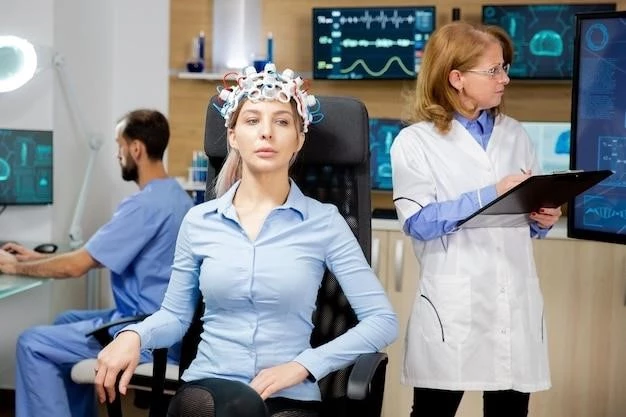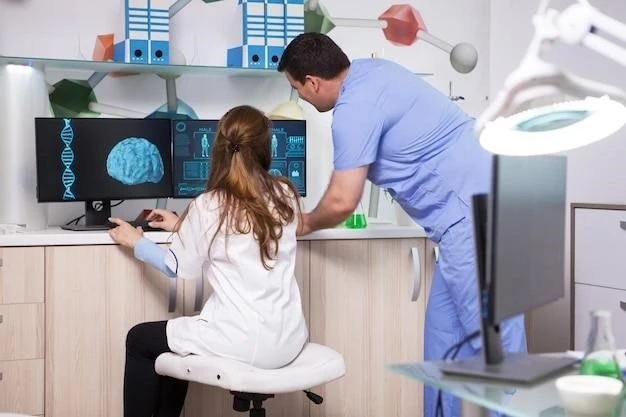Epilepsy, Nocturnal, Frontal Lobe Type
When discussing epilepsy, the frontal lobe type poses unique challenges. The nocturnal aspect complicates diagnosis and treatment. Understanding its impact on awareness and consciousness is crucial in managing this condition effectively.
I. Introduction to Epilepsy
Epilepsy is a chronic neurological disorder characterized by abnormal brain activity leading to seizures. When epilepsy affects the frontal lobe, it presents unique challenges due to its location in the brain. Frontal lobe epilepsy can cause convulsions, altered consciousness, and a range of other symptoms.
Nocturnal seizures occurring during sleep are common in frontal lobe epilepsy, adding complexity to diagnosis and treatment. These seizures may go unnoticed, making it crucial to conduct thorough evaluations to identify nocturnal frontal lobe epilepsy accurately.
To diagnose epilepsy, medical professionals often use electroencephalography (EEG) to detect abnormal brain activity patterns. Understanding the genetic and inherited factors contributing to frontal lobe epilepsy is vital in providing a comprehensive diagnosis and developing personalized treatment plans for affected individuals.
II. Understanding Frontal Lobe Epilepsy
Frontal lobe epilepsy is a form of epilepsy that originates in the frontal lobe of the brain. The frontal lobe plays a critical role in various functions, including movement, speech, and judgment. When seizures arise in this region, they can manifest as complex partial seizures characterized by altered consciousness and motor symptoms.
Seizures in the frontal lobe may present differently from those in other parts of the brain, making accurate diagnosis essential. These seizures can be triggered by specific activities or stimuli, such as stress, lack of sleep, or flashing lights.

Frontal lobe epilepsy can impact an individual’s quality of life, affecting daily activities and social interactions. Understanding the specific symptoms associated with frontal lobe epilepsy, such as repetitive movements, emotional changes, and sensory disturbances, is crucial in effectively managing the condition.
III. Symptoms and Diagnosis
Recognizing the symptoms of frontal lobe epilepsy is crucial for an accurate diagnosis. Common symptoms include sudden, unprovoked movements, altered consciousness, and unusual behaviors during seizures. Patients may experience complex partial seizures where they appear awake but exhibit abnormal behaviors.
Diagnosing frontal lobe epilepsy involves a comprehensive evaluation that may include neurological exams, imaging tests, and EEG monitoring to observe abnormal brain activity patterns. Medical professionals analyze the patient’s medical history, symptoms, and any potential triggers to assess the presence of epilepsy.
Specific symptoms of frontal lobe epilepsy may vary among individuals, making it essential for healthcare providers to conduct detailed assessments to differentiate these seizures from other types of epilepsy. Timely and accurate diagnosis is key to implementing targeted treatment strategies that address the unique characteristics of frontal lobe epilepsy.
IV. Triggers and Risk Factors
Identifying triggers and risk factors associated with frontal lobe epilepsy is essential in managing the condition effectively. Various factors can contribute to the onset of seizures in individuals with this form of epilepsy. Common triggers include stress, sleep deprivation, alcohol consumption, and specific medications.
Genetic predisposition and family history of epilepsy can also play a role in the development of frontal lobe epilepsy. Understanding the genetic component and inheritance patterns can provide valuable insights into the risk factors associated with this neurological disorder.
Environmental factors, such as head injuries, infections, and brain tumors, may increase the likelihood of developing epilepsy, including frontal lobe epilepsy. By identifying potential triggers and risk factors, healthcare professionals can tailor treatment plans to address individual needs and reduce the frequency and severity of seizures.
V. Treatment and Management
The treatment and management of frontal lobe epilepsy aim to reduce seizure frequency and improve quality of life for affected individuals. Medications, such as antiepileptic drugs, are often the first line of treatment to help control seizures. Finding the right medication and dosage is crucial in effectively managing frontal lobe epilepsy.
In cases where medications alone are not sufficient, other treatment options may be considered, including vagus nerve stimulation, responsive neurostimulation, or in severe cases, surgical procedures to remove the seizure focus in the frontal lobe. These interventions are tailored to the individual based on the severity of the epilepsy and its impact on daily functioning.
Alongside medical interventions, lifestyle modifications, such as stress management techniques, maintaining a regular sleep schedule, and avoiding potential triggers, can play a significant role in managing frontal lobe epilepsy. Regular follow-up appointments with healthcare providers are essential to monitor treatment efficacy and make any necessary adjustments to the management plan.
VI. Impact on Awareness and Consciousness
Frontal lobe epilepsy can have a profound impact on an individual’s awareness and consciousness during seizures. Depending on the specific areas of the frontal lobe affected by abnormal brain activity, seizures may result in altered levels of consciousness, ranging from brief moments of confusion to complete loss of awareness.
During complex partial seizures characteristic of frontal lobe epilepsy, individuals may exhibit automatisms, repetitive movements, or engage in purposeless behaviors while having limited or no recollection of the episode afterward. This can significantly impact daily activities, work performance, and social interactions.
The unpredictable nature of seizures in frontal lobe epilepsy can lead to challenges in maintaining consistent awareness and vigilance. Individuals may require support from caregivers, colleagues, or healthcare providers to ensure their safety during and after seizure episodes. Understanding the specific effects on awareness and consciousness is crucial in developing strategies to manage and cope with the impact of frontal lobe epilepsy on daily life.
